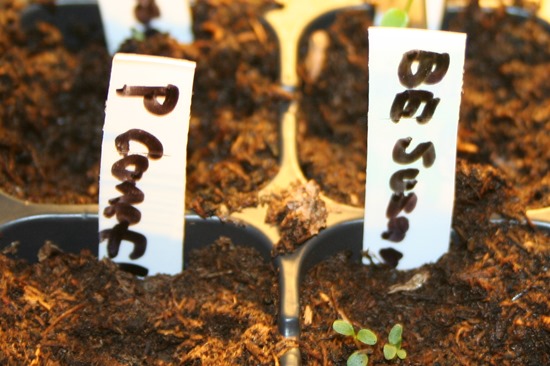Multiple rain barrels hooked up with common garden hose connectors
10.2 years ago cheap, DIY, rain barrels
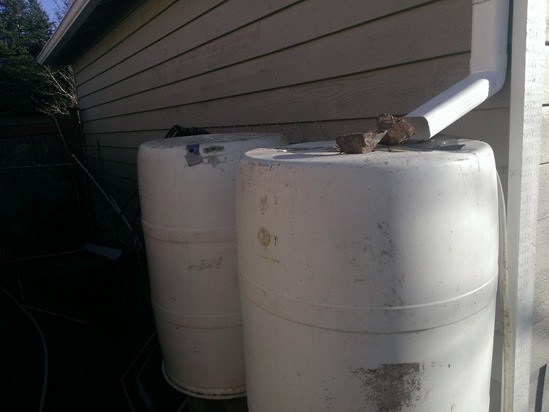
Last summer I setup some cheap rain barrels which I describe in this post which worked great though had one major flaw. If you wanted to do some maintenance or add any new barrels you would have to literally have to saw them apart. This time around I came up with a design that is not only simple but can be done with almost no tools and uses common garden hose connectors.
Materials needed
- 55 gallon food grade plastic barrels X 2
- 2 way garden hose splitter (plastic will work but recommend metal for longer life)
- Old garden hose
- Male garden hose mender
- Teflon plumbers tape
- Cinder Blocks (at least 2 for each water barrel…I went with 6 for each barrel for additional water pressure)
- 4”X4” Lumber (8 foot)
- Screwdriver
- Utility knife
Construction
Knowing Pascal’s principle I wanted to take advantage of all the height I could safely get. I chose to elevate my rain barrels by taking cinder blocks 2 wide and 3 high. I then place two 4”X4” lumber cut at 4 foot lengths to provide a few additional inches of height, but also provide some room for my connections under the barrels.
Now I have a firm foundation not it is time to get these barrels hooked together so I can get maximum water pressure and access to the water in all of the barrels.
The caps on the barrels (pretty common) I picked up had a nice feature of including some nice threads on the inside of them. This provides me a nice 1 inch thread I can get a nice tight seal. The only problem these are sealed closed.
Not having a drill bit just under one inch in diameter I used a pocket knife to carefully cut the inner cap off being careful to not harm the threads.
Whats also great about this threads is they match that of standard garden hose connections. So my taking the male end of one of the garden hose splitter with a 4-5 wrappings in Teflon plumbers tape and screw it into the cap you opened up in the previous step. Repeat this process for all of your remaining rain barrels.
Note: This addition of Teflon plumbers tape is technically optional should be water tight without this but seems like a cheap insurance for the alternative of having a slow leak under your barrels.
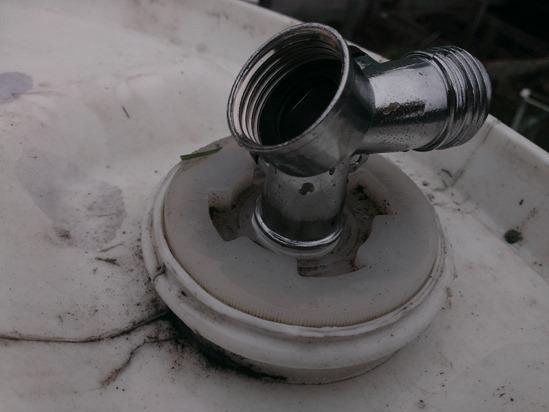
Next add one end of male the garden hose to the end you typically would hook up to your faucet and hook the other end (other male end created using Male garden hose mender mentioned above. For this I cut an old garden hose which had a couple leaks in it to proper length since obviously 25 feet of hose between barrels would be some serious overkill.
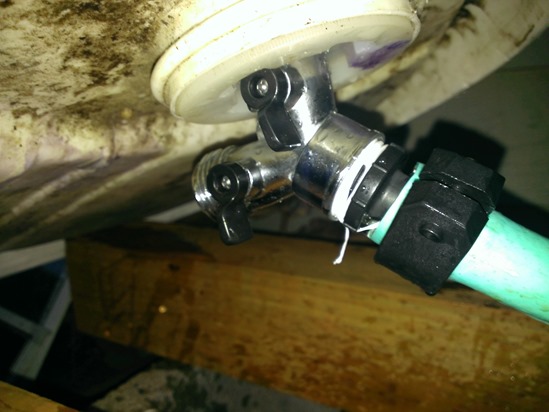
If you have more than two rain barrels you can then use short lengths of typical garden hose (one male/one female) and link them together in a similar manner.
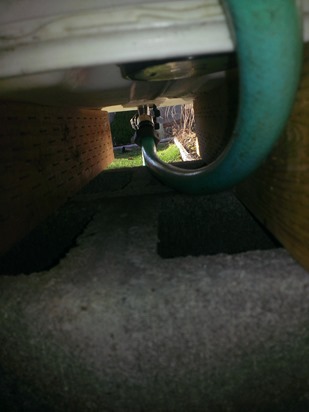
For overflow I went with a pretty simple option of drilling a hole and manually threading a pipe fitting that attached to piece of tubing (easy finds at your local home improvement store)
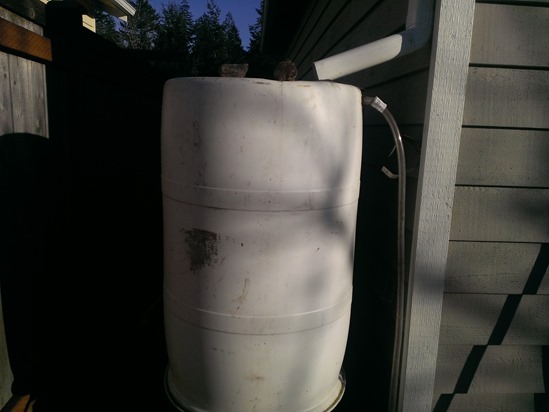
Better picture of overflow…this tube goes right down to the drain the water used to flow down with the drain spout. So once all the barrels are full all the excess water will just flow down here.
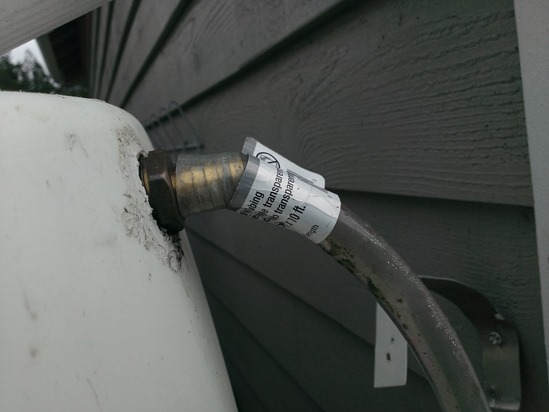
Speaking of the drain spout I used some cheap vinyl drain pieces to redirect the water into a 3 inch hole I cut in the top of the barrels.
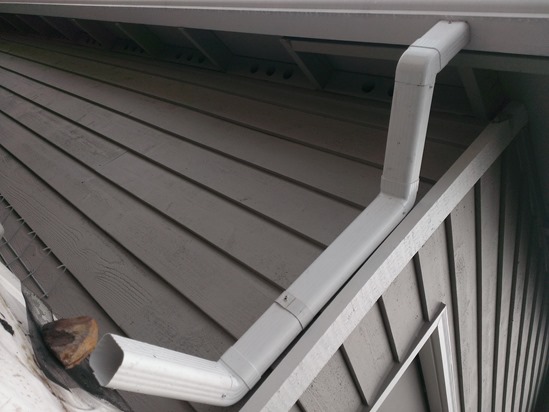
I added a piece of screen to filter out the leaves and little piece of sediment that may come from the roof. I also screwed on a plastic lid I scavenged from the recycling bin which I cut a matching 3 inch hole into. This had a decent lip on the lid to help direct the water into the barrels when the rain starts coming down pretty hard.
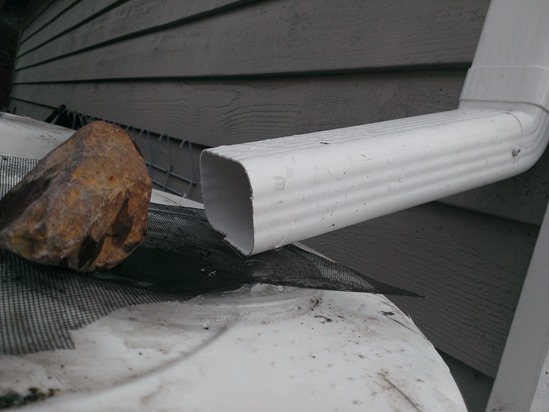
Overall I really like how this came out. Not only does this allow me to easily add new rain barrels and I decide to add them but I also with the valves on the 2 way garden hose splitter I can easily start/stop flow from any barrel and do maintenance on another barrel without having to draining all of the water from the system.
Making your own potting soil
10.3 years ago cheap, compost, fertilizer, soil sifter
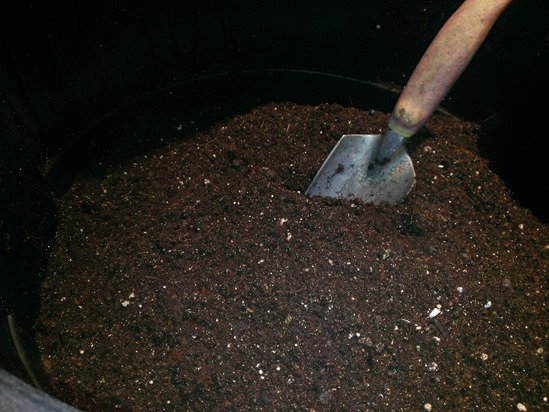
The last few years have bought a bag or two of potting soil for my spring planting though each year I am disappointed when I open the bag containing a bunch of bark , twigs, gravel, and even several pretty large rocks.
This year I have decided to make my own potting soil with very little effort and much less cost. Given I just recently harvested my compost bin and got about 15 gallons of screened compost as my starting point to make my own mix.
CVG Potting Soil Recipe
Ingredients:
- 15 gallons of screened compost
- 1 brick coconut coir (hydrated)
- 4 cups of vermiculite or perlite
- 1 cup organic fertilizer
Directions:
Add all ingredients to 20 gallon trash container. Mix thoroughly with large shovel until everything is well incorporated. Cover with lid with several holes drilled in the top (otherwise moisture+no light = mold growth)
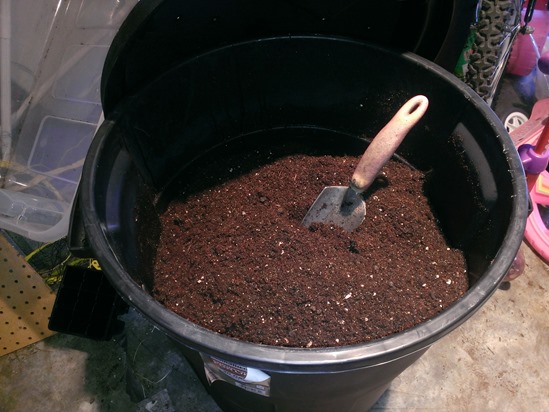
You can use a smaller container than 20 gallons but would not recommend one smaller or it can be a decent reach to get the last of the soil out of the bottom…
How to harvest your compost from your portable compost bin
10.3 years ago compost
![WP_20140104_002[2] WP_20140104_002[2]](http://www.cheapvegetablegardener.com/wp-content/uploads/2014/01/WP_20140104_0022.jpg)
When it comes to making compost I am pretty lazy approach to this process, no turning, no tumblers, just stack up material in the compost bin and let natural decomposition process and worms do their job.
Given I use a portable SoilSaver Classic Composter with just a bit muscle I can lift this off my pile of compost. As you can see with the composter removed you can view the various layers of composted and completely raw materials with various levels in between.
I then take the empty composter and move to a new location where not much is growing. What is great about having the ability to move your composter location is it will rejuvenate the soil under it so once you compost there for a year or so and move it it would be difficult for something to not grow there.
![WP_20140104_016[2] WP_20140104_016[2]](http://www.cheapvegetablegardener.com/wp-content/uploads/2014/01/WP_20140104_0162.jpg)
Taking a shovel keep removing the material that still needs some time in the composter and place back into compost bin in its new location.
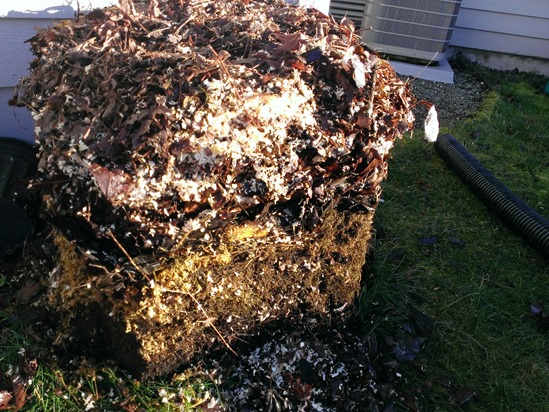
Keep taking a layer off at a time until you reach this stuff, nice finished compost. You may still have some uncomposted material mixed in there so I like to run this through my homemade soil sieve to filter out the larger material. When I am running the material through I am not too careful to get every bit of finished compost out to leave some in the compost bin as a starter for the next batch.
![WP_20140104_019[2] WP_20140104_019[2]](http://www.cheapvegetablegardener.com/wp-content/uploads/2014/01/WP_20140104_0192.jpg)
Add aeration to compost bin with irrigation pipes
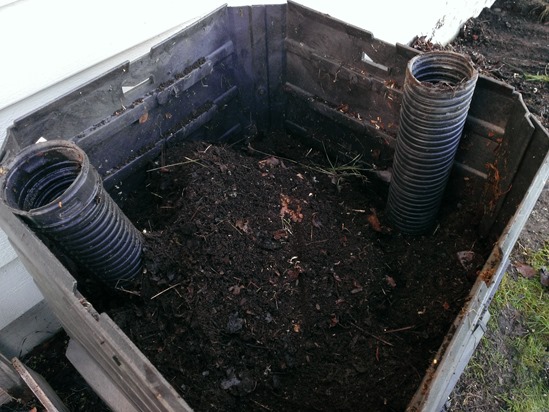
Here is a quick and easy way to add additional aeration and also provide a convenient way to deeply water your compost during dry months.
Simply cut to length of corrugated irrigation pipe with a utility knife and run them through your compost bin.
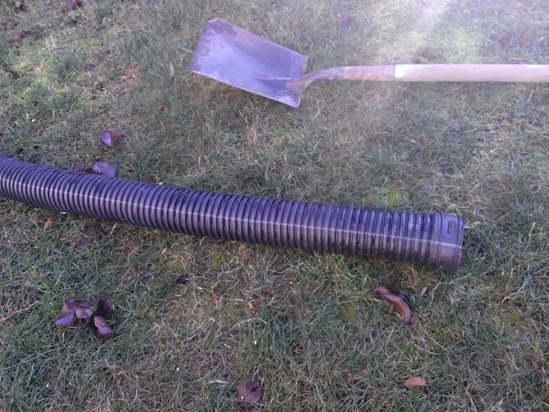
Fill with uncomposted material being careful to not add material in the exposed tube(s). This should allow better airflow to your compost bin without the extra effort of turning your material as often.
Planting seeds in January
10.3 years ago bok choy, indoor growbox, indoor seed starting, onions
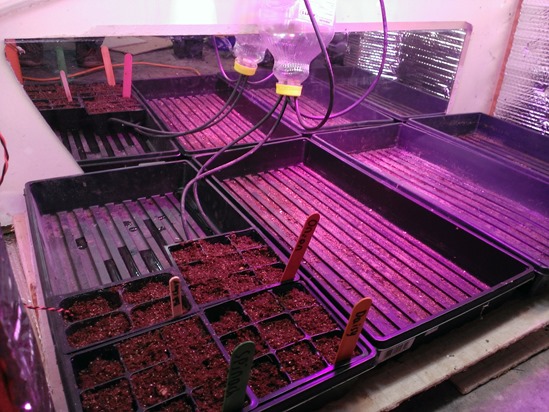
Though it is still pretty cold inside right now is the time for me to begin start planting seeds for this spring. These include bok choy which are very cold tolerant, onions which do pretty good in the cold but could use a head start on these to get some good sized bulbs by the end of the season. I also started some daisies which I will let mature plenty before bring them out. Finally I planted some spinach to try to grow some greens for consumption in my grow box given how much empty space I have in here right now 🙂
For my seed starting mix I start with some coconut coir, though you can find this in the gardening section I typically grab a three pack at the pet store at nearly half the price. Though looks like you can get it at a pretty good price on Amazon these days with free shipping.
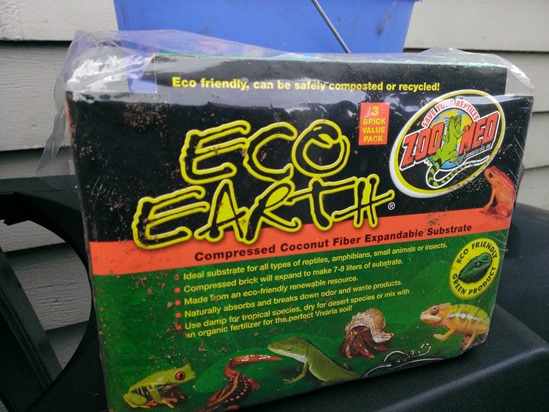
All you have to do is add 1 gallon of water and let sit for a about 10 minutes then still a bit with a trowel.
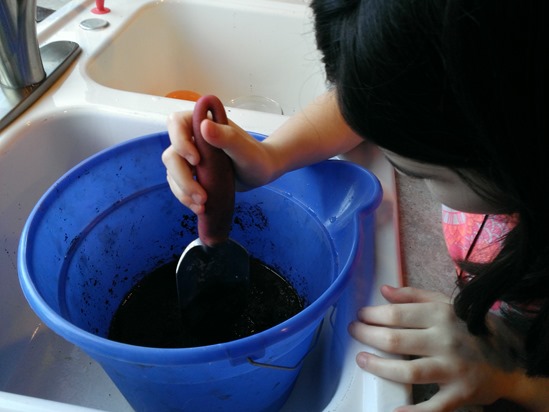
Though this works great by itself as a seed starting medium I typically add a couple cups of vermiculite (to lighten up and moisture control) and a handful organic fertilizer to add some trace minerals to give the seedlings a head start when they emerge.
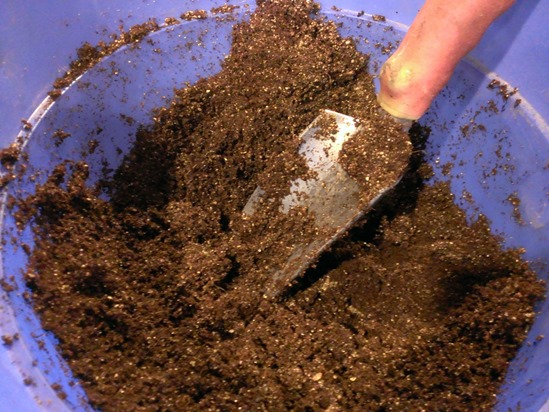
Finally will fill the Name Your Linkplant trays with your seedling mix and add you seeds, not watering should be required since the soil should already be pretty moist.
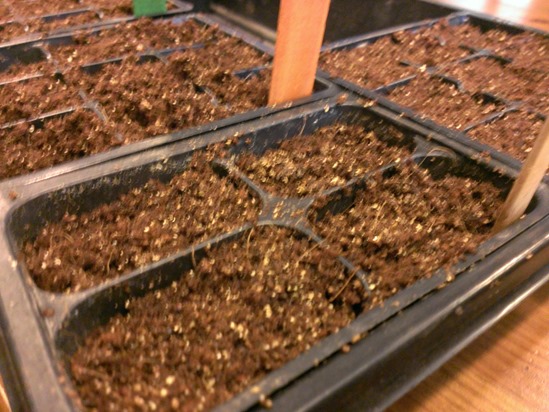
Complete by add some popsicle sticks with some handwritten labels or use a discarded yogurt container from your recycling container to make your own plant labels by simply cutting them into strips like shown below.
